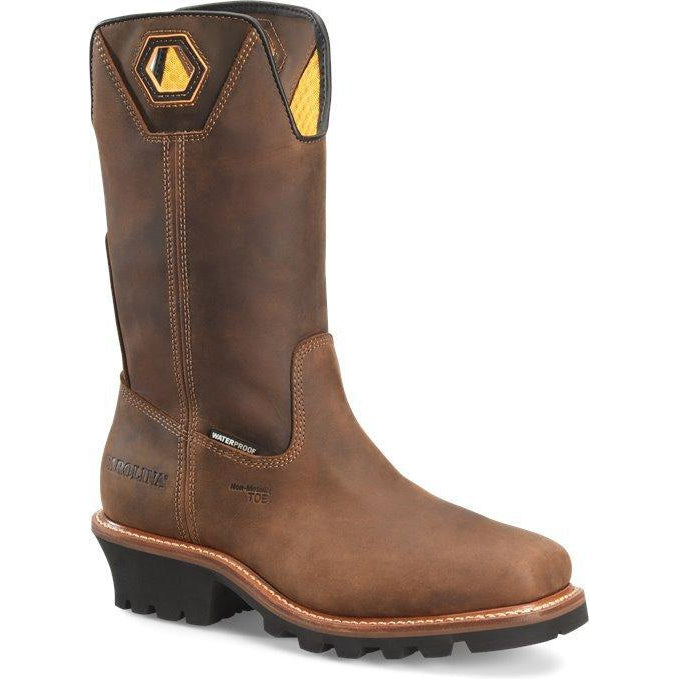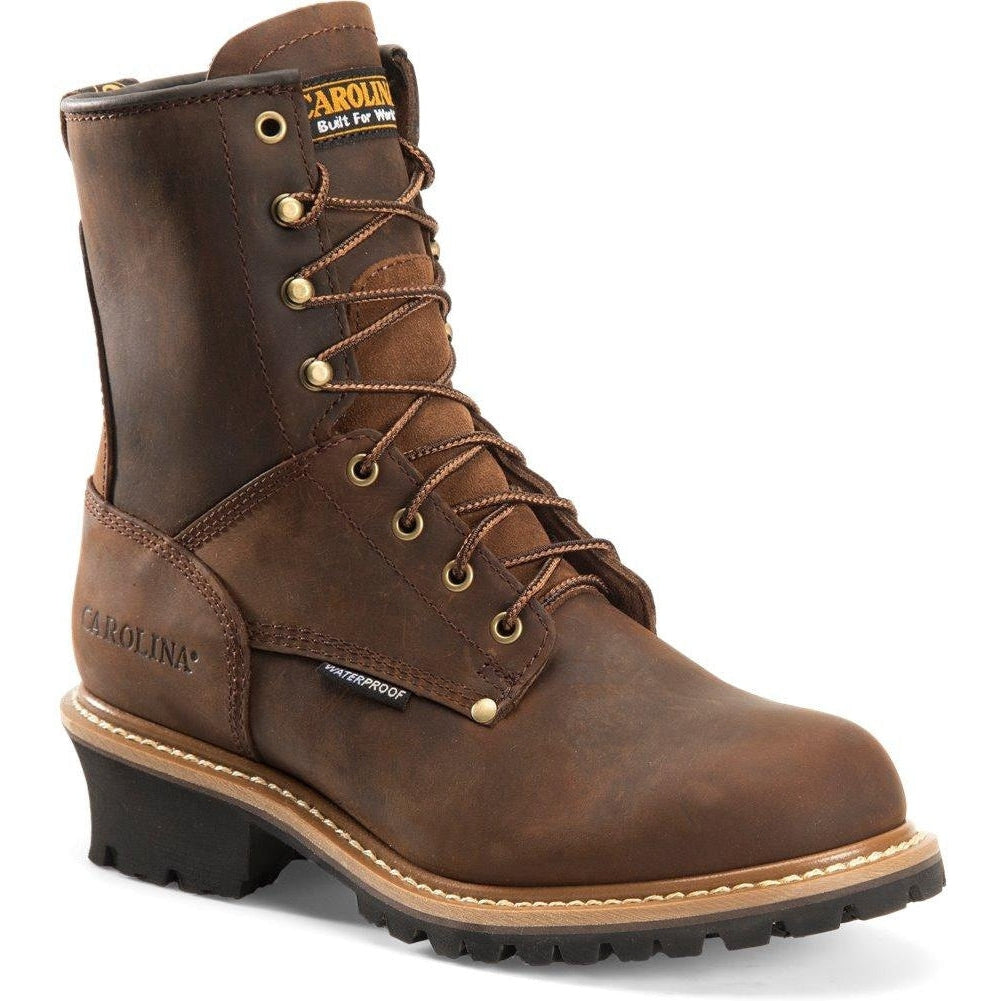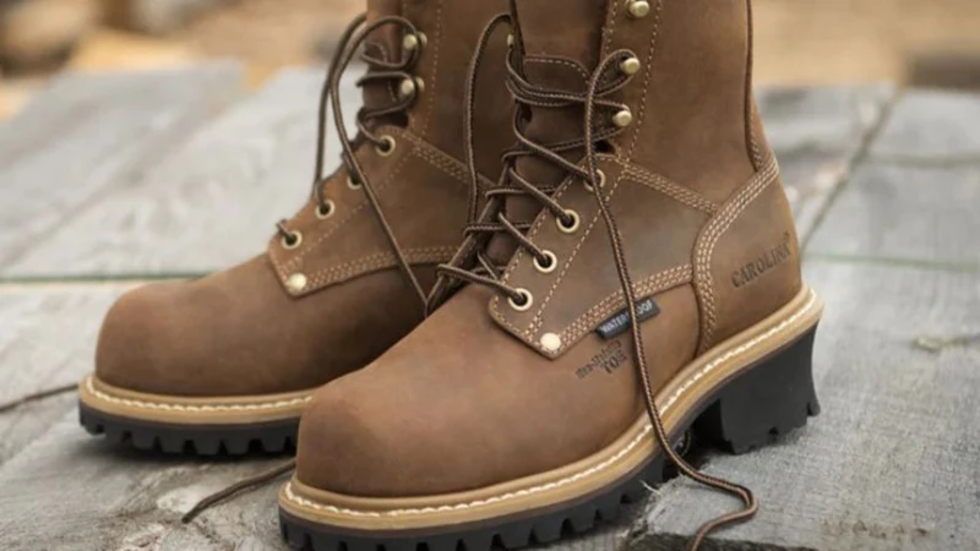Logger boots are known for their rugged design, durability, and notably, their high heels. But why do logger boots have high heels? It’s a question that comes up quite often, especially among those unfamiliar with the demands of outdoor work. The elevated heel on logger boots is not just a stylistic choice but a practical feature designed to enhance safety, stability, and functionality. Let’s explore the reasons behind this unique design and address some common questions about logger boots.
Why Do Logger Boots Have High Heels?
One of the most common questions people ask is, why do logger boots have high heels? The primary reason is functionality. Logger boots are designed for outdoor workers who navigate uneven, rugged terrains daily. The high heel helps provide superior traction and stability on slippery, muddy, or rocky surfaces.
The elevated heel allows the foot to dig into soft ground, reducing the risk of slipping and enhancing balance. This is especially useful on steep inclines or when walking on uneven ground. In contrast to regular work boots, which often have flat soles, the high-heeled design of logger boots is specifically tailored to handle treacherous terrain and uneven surfaces safely.
What is the Purpose of a Heel on a Boot?
The purpose of a heel on a boot goes beyond aesthetics or style. In logger boots, the high heel serves multiple practical purposes, including:

1. Traction and Stability: Chippewa Hador Steel Toe Waterproof Logger Boots
The Chippewa 55025 features a steel safety toe that meets ASTM F2413 safety standards. This ensures critical protection from falling objects and compression, making these boots a reliable choice for hazardous job sites. The IQ Logger outsole provides exceptional traction across various terrains. Its unique design allows the outside lugs to flex and remove debris as you walk, ensuring steady footing in tough conditions.

2. Enhanced Balance and Posture: Carolina Men's Elm 8" Steel Toe Waterproof Logger Work Boot
A 100% waterproof membrane will keep your feet dry all day long. It has a steel safety toe that meets or exceeds the ASTM Standards for compression and impact testing rating of ASTM F2413-18. It also features pillow cushioning, a layer of memory foam that wraps the foot in comfort. Combined with existing insole systems, it offers the ultimate in cushioned comfort.

3. Climbing Support: Danner Men's Logger Soft Toe WP Work Boot
The Danner Logger was created to bring a new level of lightweight comfort and flexibility to the traditional logger platform. It has a 90-inch heel providing added safety for boots used on steep terrain, climbing in and out of equipment, and using certain tools. The VIBRAM™ 360 LOGGER provides substantial edging and superior traction.

4. Foot Protection: Timberland Pro Men's Evergreen Logger Composite Toe Logger Work Boot
This Timberland logger boot has composite safety toes, electrical hazard protection, and an exclusive Independent Suspension Network™ (ISN™) system for superior control, support, and agility. It features breathable, moisture-wicking linings made of ReBOTL™ material containing at least 50% recycled plastic and Vibram Fire & Ice™ rubber outsoles that maintain their flexibility and traction in freezing temperatures and wet environments.
Are Logger Boots Bad for Your Feet?
A common concern is whether logger boots are bad for your feet, particularly because of the high heel design. In general, logger boots are not bad for your feet if worn appropriately and in the right environment. They provide excellent support, stability, and protection for those working on uneven and rugged terrains.
However, prolonged use on flat surfaces may lead to discomfort or foot care issues because the arch support in logger boots is designed for uneven terrain, not flat ground. If you have pre-existing foot conditions or experience sore feet, it’s advisable to consult a foot doctor before choosing logger boots for everyday use.
To minimize discomfort:
- Choose comfortable boots with adequate cushioning and arch support.
- Opt for insulated logger boots in colder climates for added warmth and protection.
- Ensure the boots fit well and allow room for movement without being too loose or tight.
How Tall is the Heel on Logger Boots?
Another frequently asked question is, how tall is the heel on logger boots? The height of the heel typically ranges from 1.5 to 2 inches, although some styles go up to 2.5 inches. This medium height strikes the perfect balance between traction, stability, and comfort.
The heel height varies depending on the brand and purpose of the boots. For instance:
- High-heeled logger work boots are designed for maximum traction on steep slopes.
- Medium height heels provide a good balance of comfort and stability for all-day wear.
- Lower heels are more comfortable for extended use but may not offer as much grip on challenging terrain.
The specific height of the heel is a crucial feature that helps maintain balance and reduces muscle fatigue by promoting a natural forward-leaning posture.

Are Logger Boots Bad for Your Back?
This is another common concern among those considering logger boots. Are logger boots bad for your back? Not necessarily. In fact, the elevated heel helps maintain proper posture by aligning the spine naturally, reducing pressure on the lower back. This design is particularly beneficial for those who work long hours on uneven terrains, as it reduces muscle fatigue and enhances balance.
However, wearing logger boots on flat surfaces for extended periods can strain the back due to the unnatural arch support. To avoid back discomfort:
- Break in the boots gradually to allow your body to adjust to the elevated heel.
- Choose the right size to ensure proper fit and support.
- Opt for boots with ergonomic designs and cushioned insoles to enhance comfort.
[prc-collections-carousel]
How Long Does It Take to Break in Logger Boots?
Breaking in logger boots can be a bit challenging due to their durable construction and rigid materials. How long does it take to break in logger boots? On average, it takes about 1 to 3 weeks of consistent wear to fully break them in, depending on the material and design.
- Leather work boots generally take longer to break in due to their stiffness but become more comfortable with time.
- Synthetic boots may break in faster but may not offer the same durability as leather.
- Using leather conditioner or boot oil softens the material, speeding up the break-in process.
- Wearing thick socks or using boot stretchers also helps ease the breaking-in period.
It’s recommended to wear them for a few hours daily and gradually increase the duration to avoid blisters and discomfort.

Are Logger Boots Good for Everyday Use?
While logger boots are designed for rugged, uneven terrains, many wonder if they’re suitable for everyday use. The answer depends on the environment. Logger boots provide excellent support, stability, and protection for outdoor activities and work environments with rough, uneven ground.
However, wearing them on flat surfaces or for casual daily activities can be uncomfortable due to the elevated heel and rigid construction. For everyday use, regular work boots or casual shoes with a flat sole are more comfortable and practical.
Frequently Asked Questions
Why Do Logging Boots Have Spikes?
Logging boots sometimes come with spikes, known as calks or corks, which provide additional traction on wet, slippery logs. These spikes dig into the wood, preventing loggers from slipping and ensuring secure footing. This feature is especially useful when working on fallen trees or navigating wet, mossy ground in forested areas. It’s a safety feature designed specifically for the logging industry, where stability is crucial.
Do Logger Boots Work for Hiking?
Logger boots provide excellent traction, durability, and support, making them suitable for hiking on rugged, uneven terrains. Their high heel and deep lug pattern offer superior grip and stability on rocky or muddy paths. However, they are heavier and stiffer than traditional hiking boots, which might cause discomfort over long distances.
How Do Logger Boots Compare to Regular Work Boots?
Logger boots are ideal for outdoor environments with uneven terrains, while regular work boots are better suited for indoor or construction site settings.
How Long Do Logger Boots Last?
The lifespan of logger boots depends on several factors. On average, well-maintained logger boots can last anywhere from 2 to 5 years or even longer, depending on usage and care.






